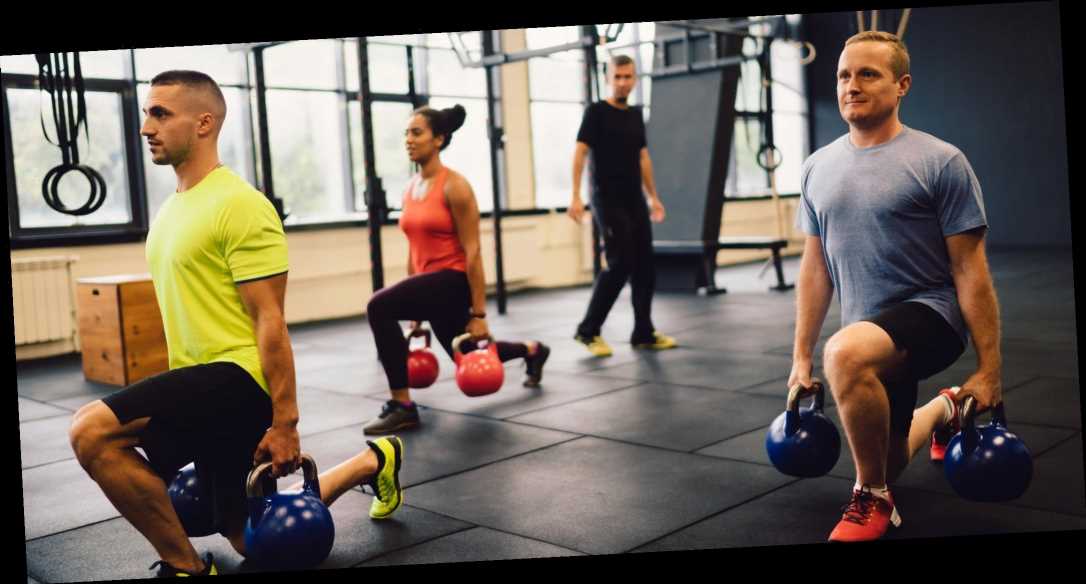The thought of hitting up a CrossFit class may have boosted your mood pre-COVID-19, but can understandably give you anxiety now.
Group fitness fans love the energy of a packed room and camaraderie with other members. But those very attributes that you love increase the risk of transmitting the novel coronavirus. It’s easy to maintain some personal space in an open gym by choosing a treadmill away from others. It’s much more difficult to keep a distance in an enclosed studio space.
The decision to attend a group fitness class amid coronavirus is stressful. And as studios and group fitness classes are reinstated throughout the United States, you might be conflicted about whether to support your old instructors.
So, what, exactly happens when you decide to go for it?
We turned to a few experts about what you should know when—or if—you decide to venture out to a group fitness class during COVID-19.
What should you expect in a group fitness class?
Although the White House revealed a reopening plan, local governments have their own regulations your gym may follow. This means a cycle class experience in California can differ from one in Texas, says Kyle Beste, Vice President of Group Fitness at Life Time.
Some chains—like Equinox—will require temperature checks for members and staff. At Life Time, member temperature checks will be conducted if required by local government, says Beste.
Life Time staff will also set up the stations for classes that require equipment, like weights or yoga mats, to ensure social distancing is intact, says Beste. Stations will be spaced seven feet apart and cleaned by staff after class.
Generally, class sizes will be much smaller—and have a different energy from previously packed rooms—if gyms follow the necessary COVID-19 guidelines. The specific number of people allowed in a studio or fitness room varies depending on local guidelines and square footage, says Bill McBride, a health club consultant.
You’ll likely see fewer classes held per day so there’s more time for cleaning as well as staggered schedules to reduce interaction between classes, says McBride. Specialty classes that rely on lots of equipment, like CrossFit, might offer more limited workouts to start.
“Everybody’s going to try and reduce the quantity of equipment in the short term that people are touching,” says McBride.
These are changes you can expect to see, according to McBride:
Here’s what some chain studios and gyms are implementing:
OrangeTheory: In Knoxville, Tenn., the Bearden OrangeTheory reopened with a number of precautions, reported WATE. Changes include masks for staff and members; shortened classes to allow for cleaning; no entry to lobby until five minutes before class, reduced class sizes; socially distanced workout stations; and hand sanitizer given upon arrival.
SoulCycle: The studio published their safety protocols, which includes temperature checks for staff and riders. Rented shoes will be disinfected after every use and not given out for two consecutive classes. High touch amenities, like gum, razors, and phone chargers will no longer be available. Class sizes will be reduced and social distancing markers will be placed on floors.
Equinox: According to the company’s website, members will be given a plastic bag to store face coverings when they’re not exercising. Studios will be closed between classes and staff will set up rooms with any necessary equipment. Yoga teachers will no longer make physical adjustments to students.
What measures should you take before before a class to minimize your risk of COVID-19?
Monitor yourself for COVID-19 symptoms and check to see if your temperature exceeds 100.4°F. You should stay home if you feel the least bit sick—which is good advice regardless of coronavirus fears.
It’s a good idea to call your gym and ask what changes they’ve made at their facility. Once you’ve decided to book a class, think about how to avoid unnecessary contact with others, says K.C. Rondello, M.D., Clinical Associate Professor of Public Health & Emergency Management at Adelphi University.
“The name of the game in everything that we are doing now is to minimize the number of people you interact with and the number of times you interact with them,” he says.
Ask if you can check-in for class by calling from the parking lot. Or sign in and then wait outside or in a less crowded area of the gym.
What measures should you take during a workout class?
Be sure to wash your hands and carry hand sanitizer in case your gym runs out. Wipe down any equipment with disinfectant before and after class. Wash your hands immediately following a workout.
And of course, you’ll want to be careful of invading anyone’s space.
What measures should your take after a class in order to minimize your risk?
This sounds harsh, but your best bet is to avoid chatting with your favorite workout buddies. You’ve heard it countless times, but washing your hands and not touching your face are key in avoiding illness.
Source: Read Full Article
